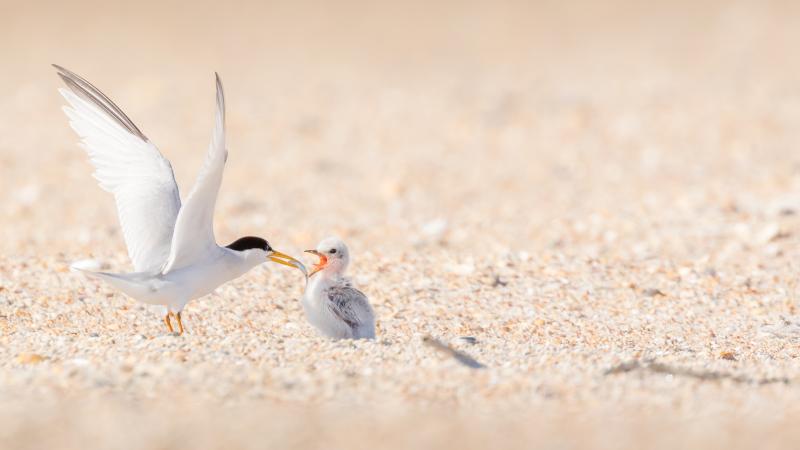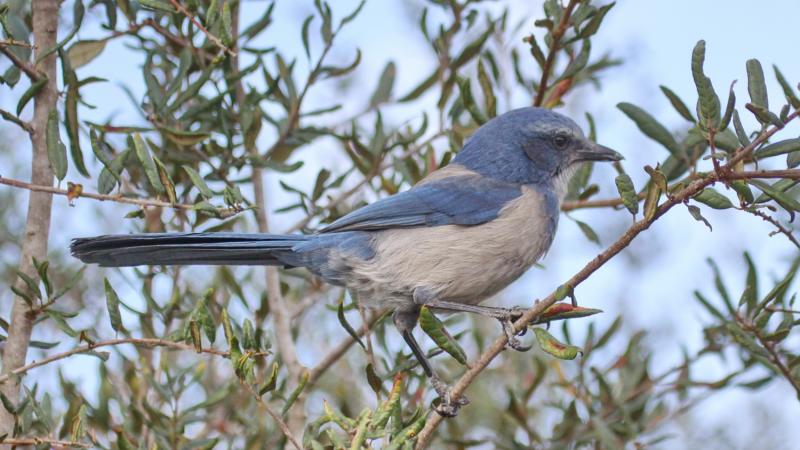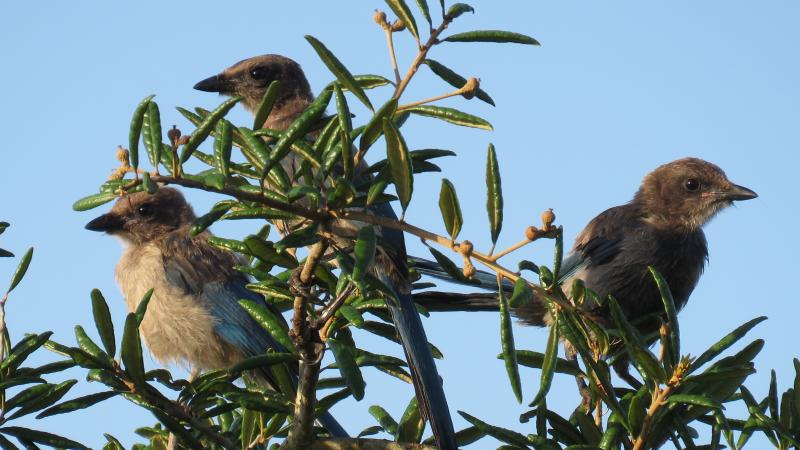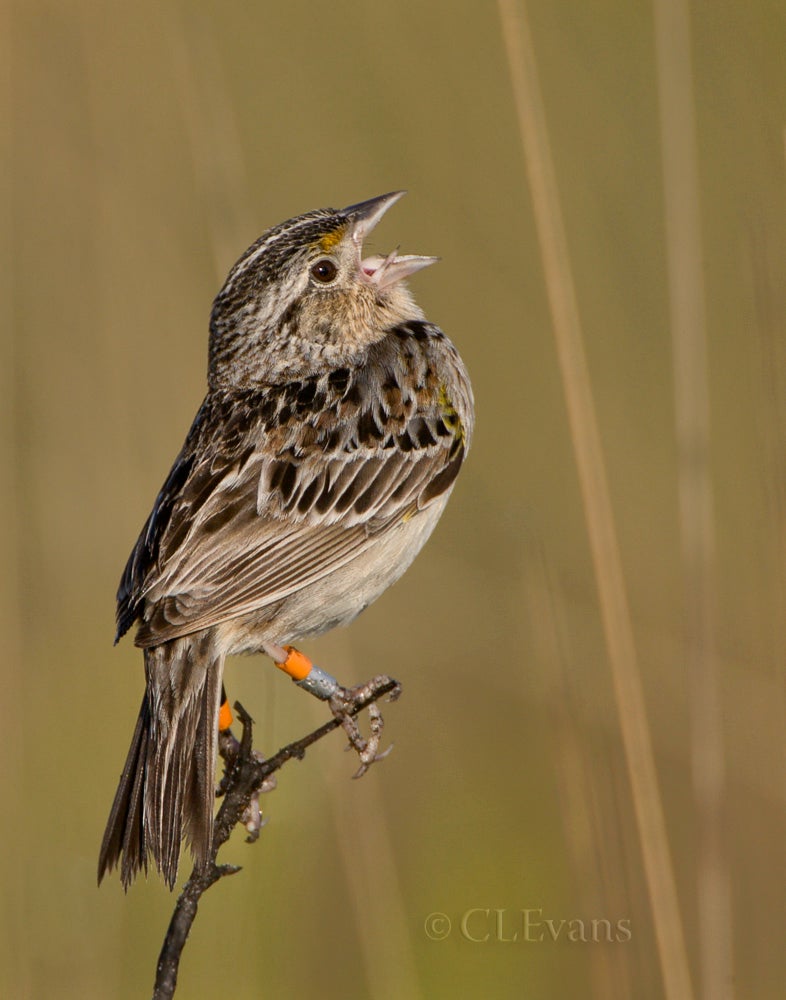
Florida Grasshopper Sparrow
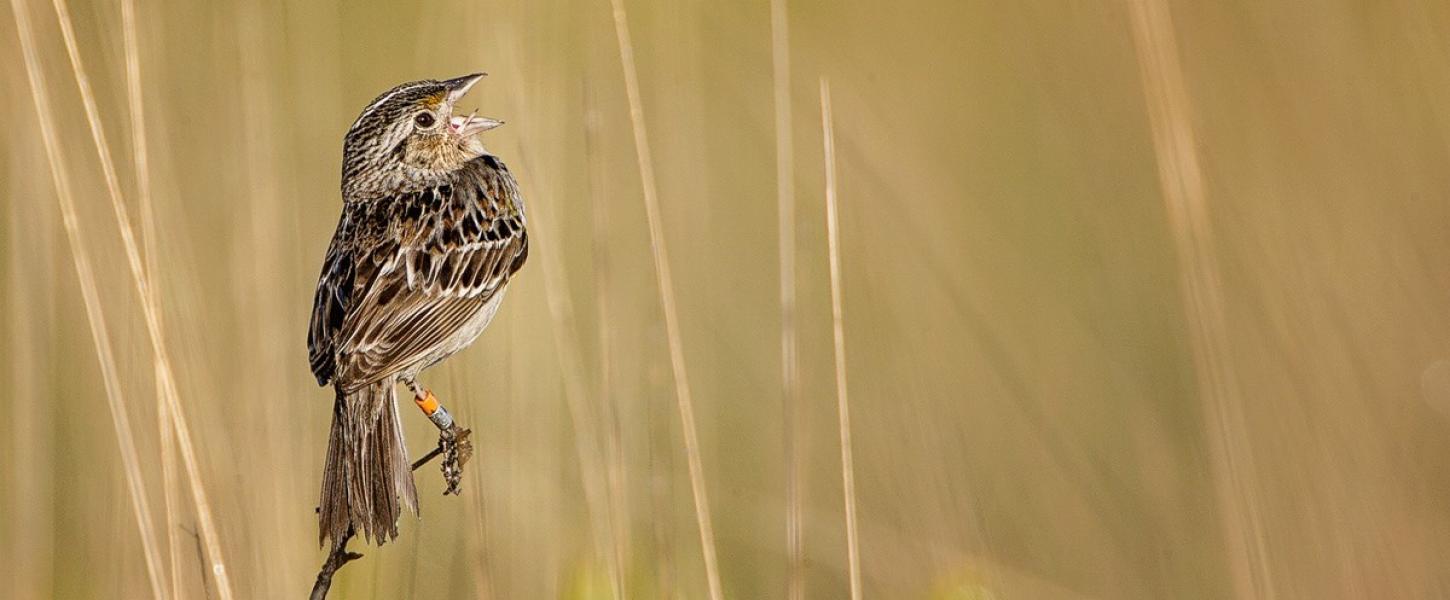
One of North America’s Most Endangered Birds

The Florida grasshopper sparrow (Ammodramus savannarum floridanus), the rarest bird in North America, is a non-migratory subspecies found only in the dry prairies of south-central Florida.
The approximate 90% decline in Florida dry prairie habitat, mostly due to conversion into agricultural land, has caused a significant decline in Florida grasshopper sparrow populations - particularly in more recent times where we have seen a steep decline from over 500 known singing males in the 1990s to approximately 50 singing males in 2018 (females are cryptic and hard to observe in the field, so male detections are used for understanding population trends).
Florida grasshopper sparrows are monitored and protected at four locations, and Kissimmee Prairie Preserve State Park is one of the last strongholds.
Florida grasshopper sparrows get their name from their buzzy, grasshopper-like song, which happens to be the weakest song of any North American bird.
This insect-like song quality, coupled with the sparrow’s secretive nature, makes finding them in the field quite challenging.
Our staff is trained to identify and locate sparrows and spends up to six months of the year searching for this unique bird across the majority of the 54,000-acre preserve.
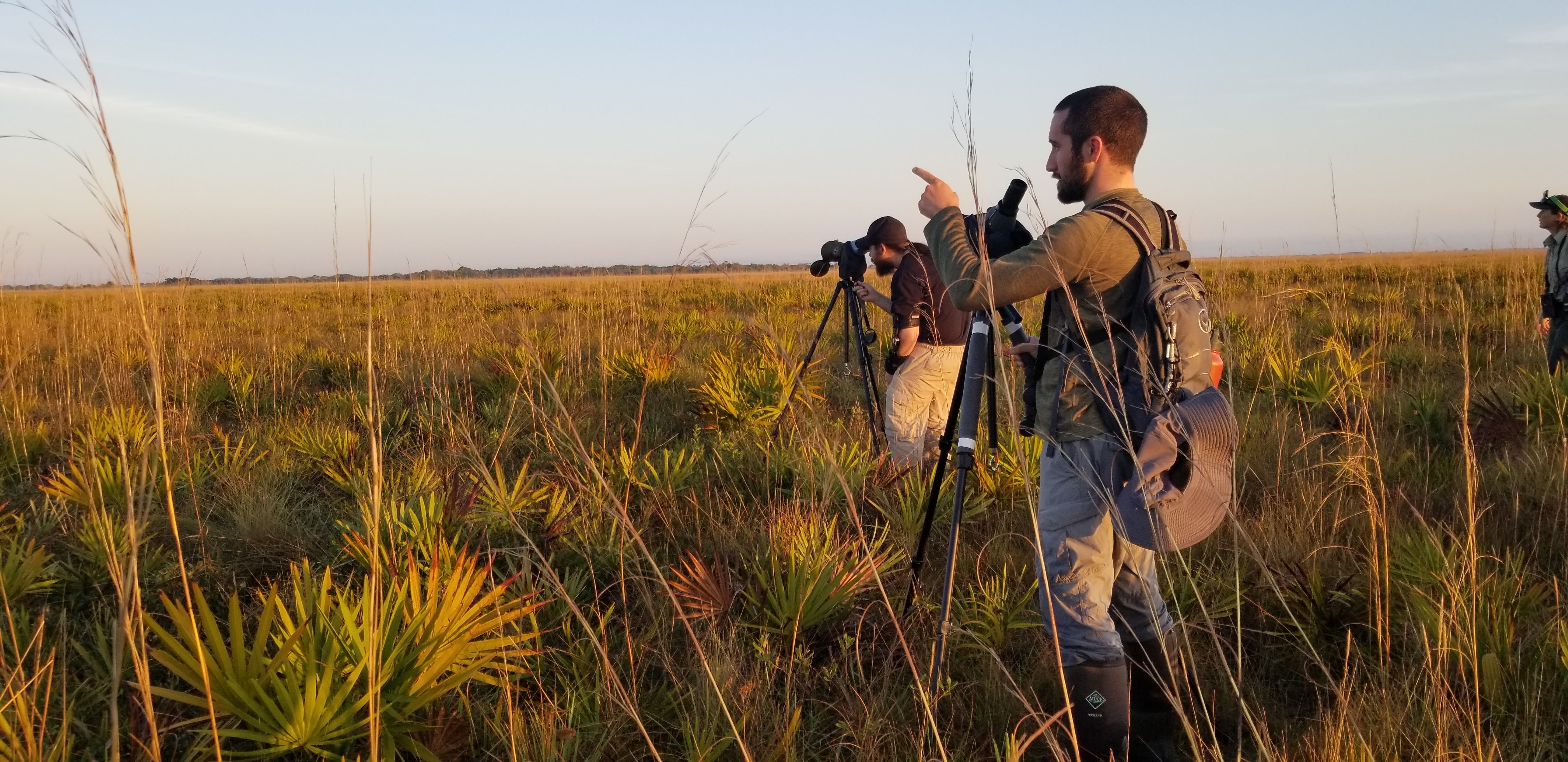
Because the birds are ground nesters and are vulnerable to predation and flooding, protocols are in place to protect any Florida grasshopper sparrow nests we find. This includes predator-deflection fencing, invasive fire ant treatments in nesting areas, and nest lifting to avoid flooding. Additionally, a captive breeding program is underway with the goal of releasing hand-reared sparrows into the wild to supplement the natural populations.
Despite such drastic declines, we at Kissimmee Prairie Preserve State Park are optimistic that Florida grasshopper sparrow populations will increase. The large-scale land management tactics of prescribed burning and invasive plant removal, along with the small-scale conservation efforts of nest protection and captive breeding, have complemented each other and provided signs of hope for the tiny and secretive bird.
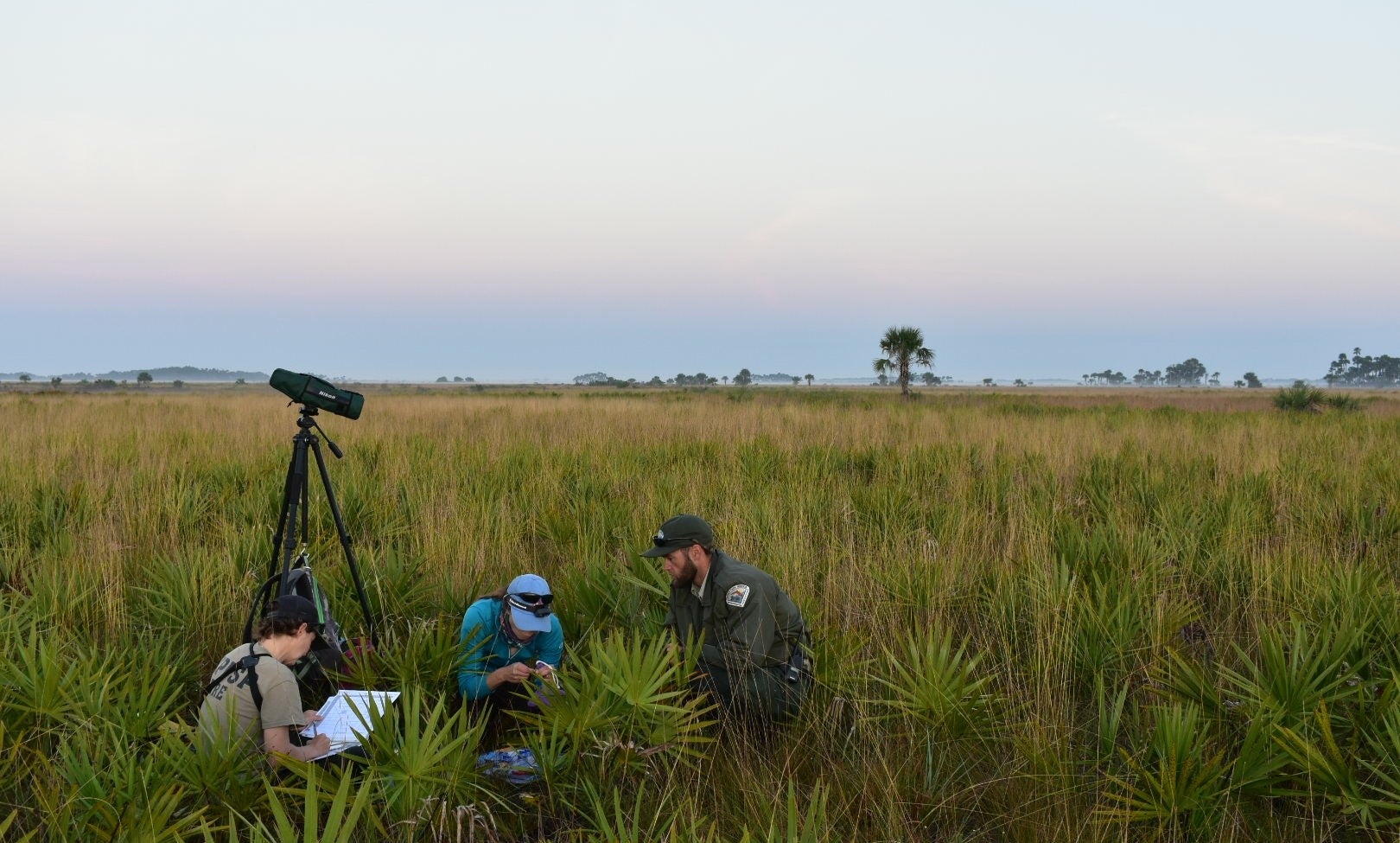
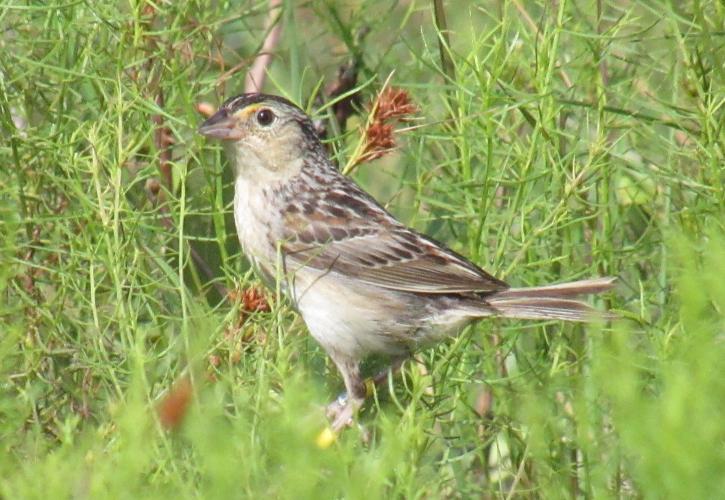
Florida Grasshopper Sparrow, photo taken by Jenna Atma
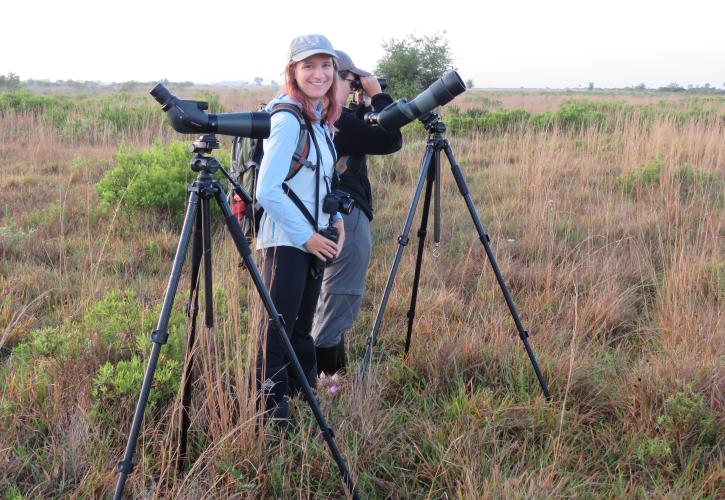
FGSP Technicians Jenna Atma and Bianca Sicich
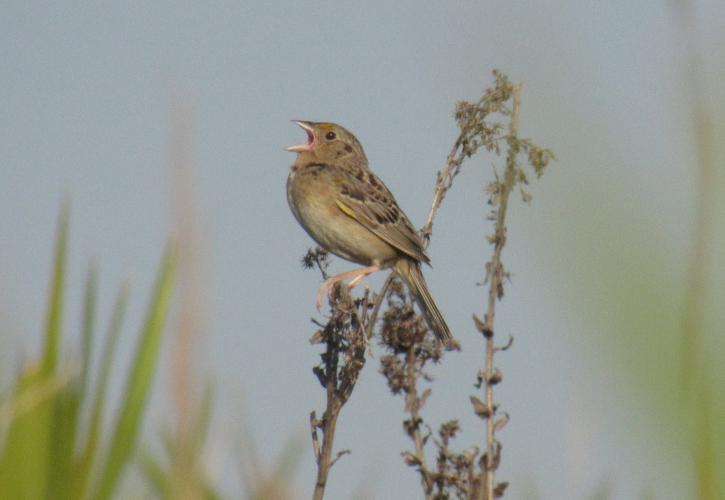
Florida Grasshopper Sparrow, photo taken by Jenna Atma
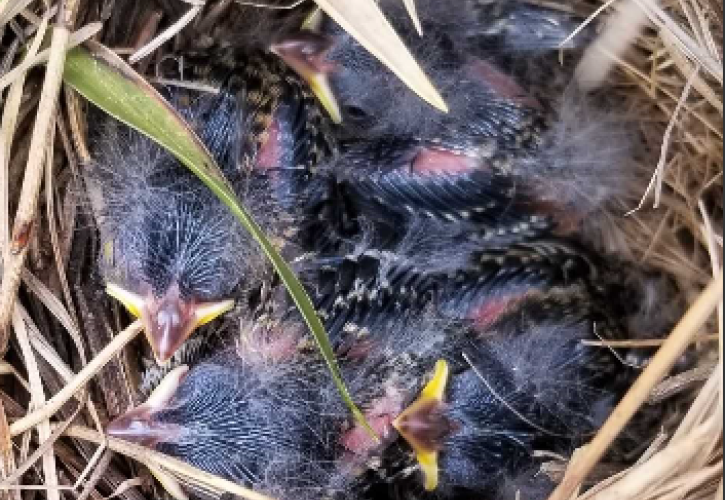
Florida Grasshopper Sparrow nest with four nestlings
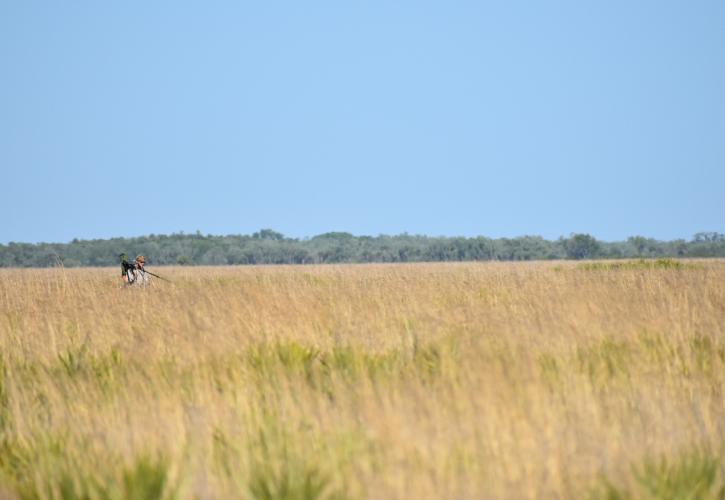
Florida Grasshopper Sparrow technician surveying the prairie
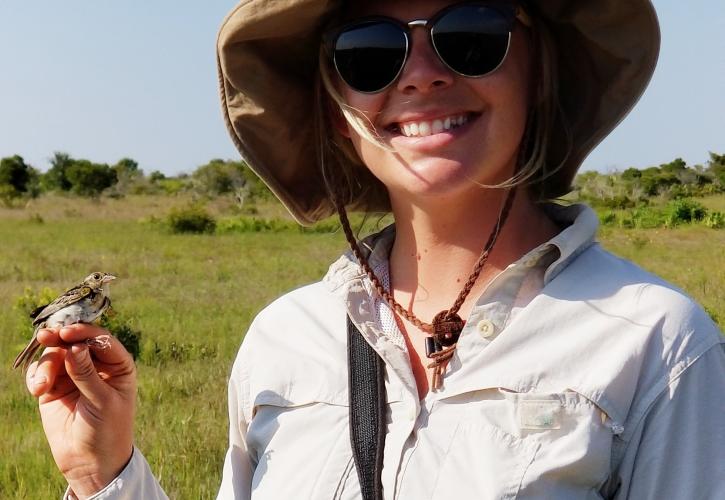
KPPSP Biologist Catie Welch holding a FGSP
